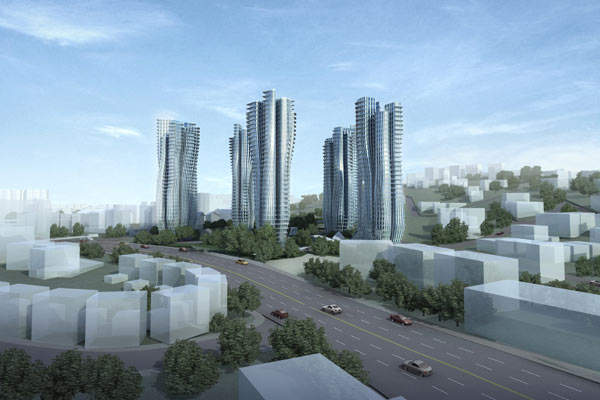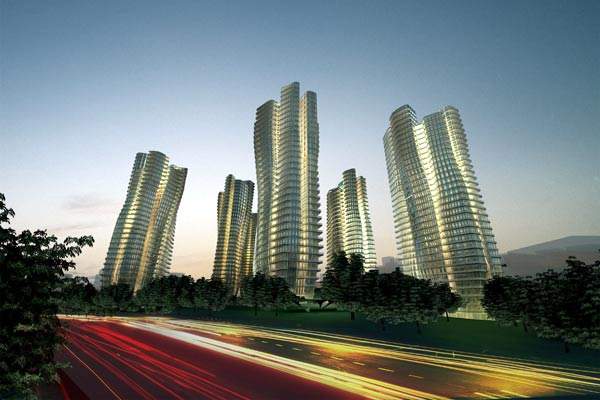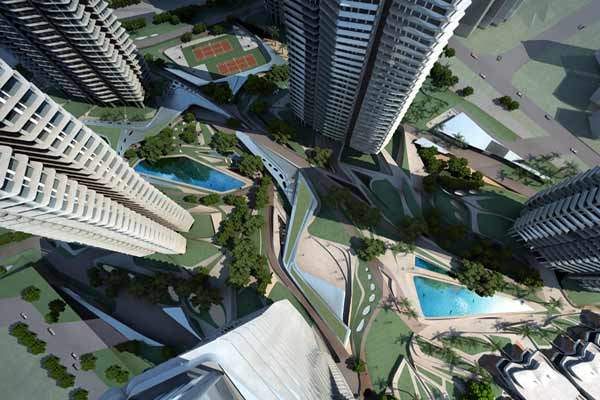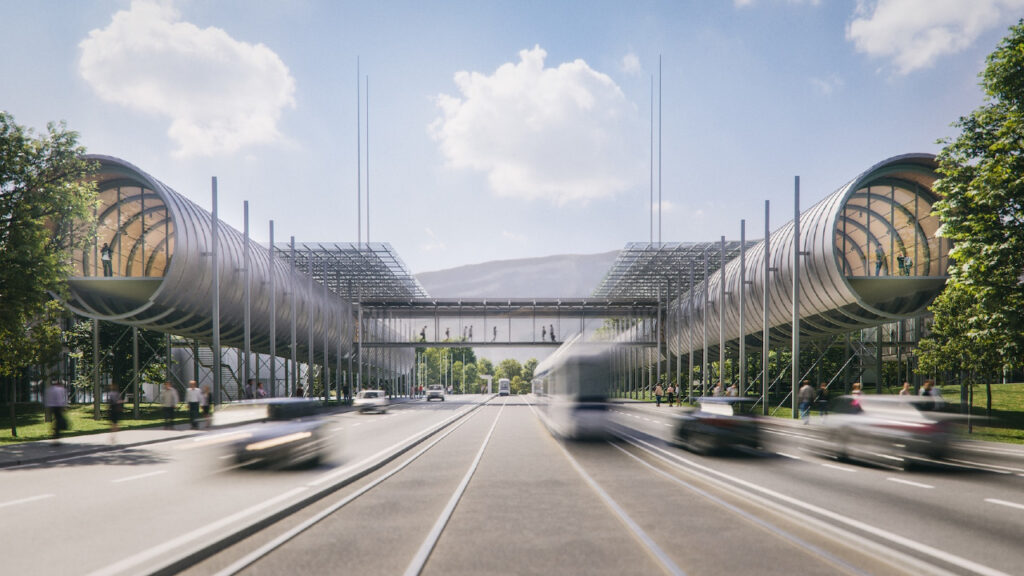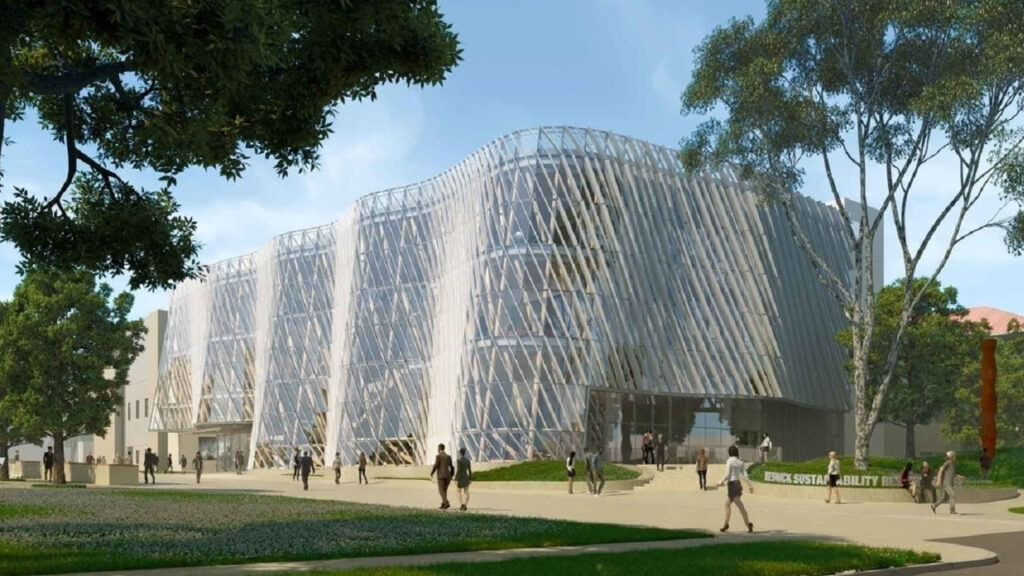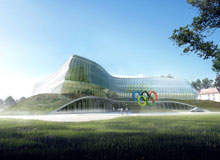D’Leedon, previously called Farrer Court, is a new residential development in Singapore situated in the city-state’s residential area of Tanglin. It consists of seven high-rise towers and 12 villas on an 838,488ft² site at Farrer Road, close to Holland Road, and will become the largest residential development in Singapore’s history.
Designed by London-based architects Zaha Hadid (ZHA), the 150m-high, 36 storey towers will be prominent for their petering vertical silhouette, their branched top-end configuration and innovative ground-level landscaping.
The brief given by Singapore property developer CapitaLand called for a world-class iconic residential development that would attract the local and international high-end market.
The £1.1bn project will be strategically positioned close to the amenities of Holland Road and the future Holland Village MRT (mass rapid transport) station, to be completed in 2015.
The residency has a direct connection to the main traffic route of Farrer Road, and the absence of high-rise buildings in the near surroundings gives unobstructed sightlines to and from the towers, making it a prestigious and highly visible site across the whole city.
Views to Bukit Timah Hill, Singapore Botanic Gardens, MacRitchie Reservoir and the Orchard Road city skyline are also optimised.
Building design
The seven towers making up the programme visually ‘grow’ from sunken private gardens within the site landscape. The lower floors kink in to highlight the point where buildings meet the ground, enabling a greater open area and the creation of private gardens, which are unique for developments of this scale and density.
The towers themselves are subdivided into petals according to the number of residential units on each floor. The petals are expressed in three dimensions thanks to vertical cuts which give definition to the building’s façades and, at the same time, allow for cross ventilation of most of the flats.
The buildings culminate at the top with a series of fingers stepped at different heights (the highest is 36 storeys), which blend the transition between the architectural fabric and the sky.
The buildings face each other and the road at different angles creating visual diversity, enhanced from within by the careful use of balconies and façade panelling. The buildings offer a total floor space of 220,000m², with a basement area of 70,000m².
Together they will hold approximately 1,715 units ranging from two to four bedrooms, 12 villas, eight retail shops, as well as more than 30 of both garden units and penthouses. Amenities will include two large swimming pools, children and relaxation pools, two clubhouses and a series of party houses – as well as outdoor fitness facilities.
Having been designing in Singapore for ten years, the partners-in-charge of the project – the 2004 Pritzker Prize-winning Zaha Hadid and architectural theorist Patrik Schumacher – say the Farrer Road design is the result of the firm’s decade-long research into the urban fabric of the city.
The seven-tower development on one of Singapore’s most prominent sites represents further exploration into the tower typology and our studies into organisational systems and growth in the natural world, according to the architects.
Singapore architecture and engineering firm RSP was also involved in the design.
Structural elements
The main structural system will be concrete based. The tower elevations will be glazed to allow for maximum panoramic views from the site out towards the surrounding areas.
Project architect Viviana Muscettola commented on the engineering challenges of designing a building of this ‘wine glass’ shape. She stated the biggest challenge to be the lateral stability of the core.
Structural walls are designed perpendicular to the core in such a way that they allow internal flexibility.
The individual petals are wrapped by edge columns and are tied back to the core. Structural columns within the floor plan are completely eliminated for maximum flexibility.
Innovative landscape
The ground landscape level will be dominated by greenery to emphasise the presence of florid vegetation under Singapore’s tropical climate.
The site levels are reorganised into a series of terraced plateaus to maximise the area dedicated to communal site amenities.
The orientation and placement of the buildings is optimised in relation to the local environment as well as to maximise views out towards the surrounding city and landscape.
Sports courts, a running track and fitness stations are also integrated into the landscaping.
Consultation on the landscaping concept was provided by GROSS.MAX. from Edinburgh, with local architects ICN contracted to carry out the design.
The Farrer Road project is a CapitaLand-led consortium development; other partners include Hotel Properties, Morgan Stanley Real Estate Special Situations Fund III and Wachovia Development Corporation.

